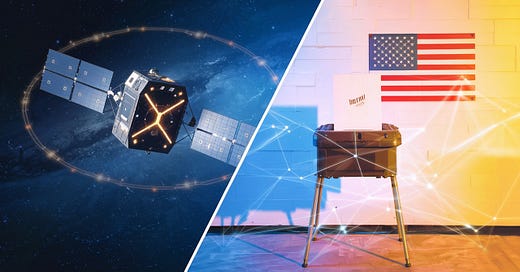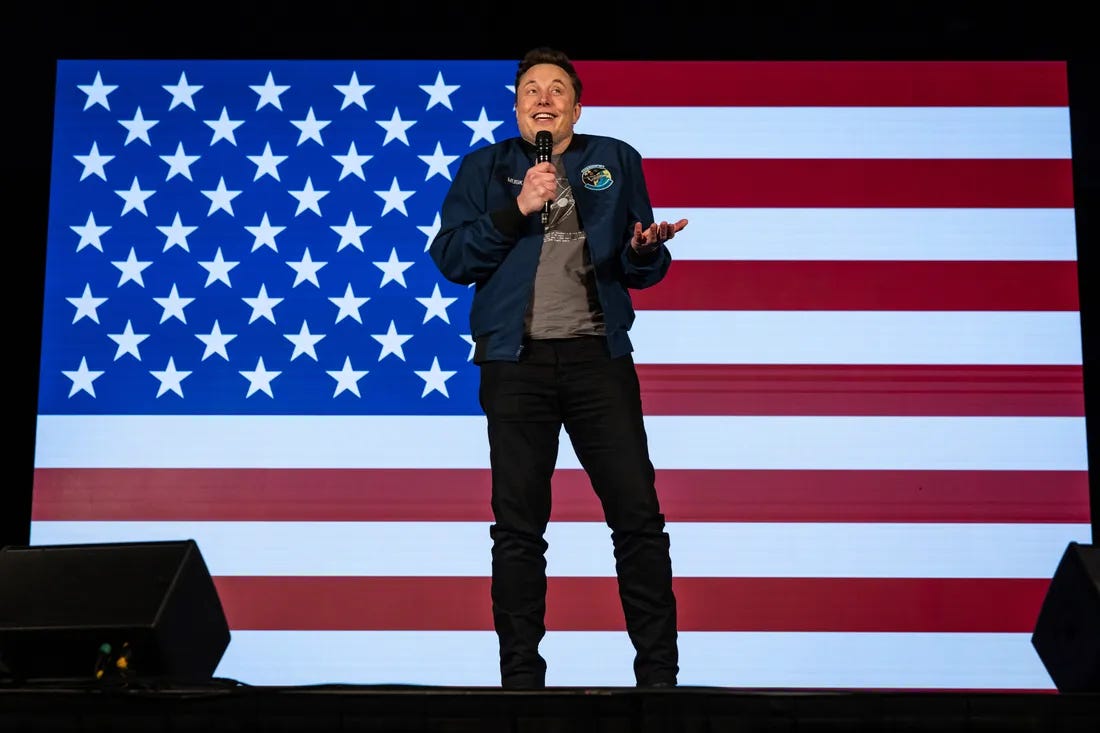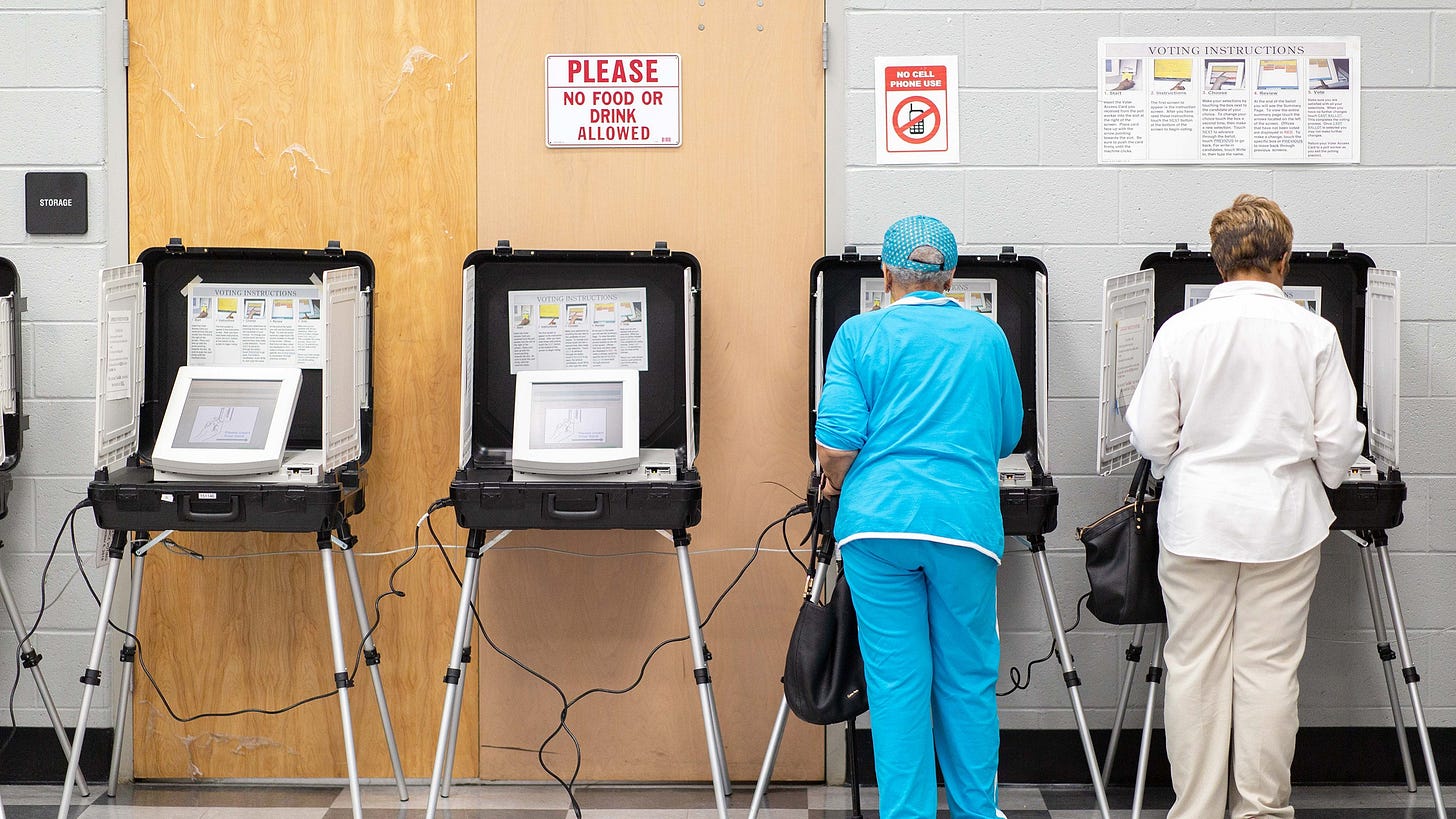Days Before the Election, Emergency Powers Gave Starlink Unprecedented Access to America's Cell Networks
NARATIV EXCLUSIVE: How hurricane authorizations created a backdoor that could reach voting infrastructure when it was most vulnerable
Just days before the 2024 presidential election, federal regulators granted SpaceX something unprecedented: emergency authorization to connect Starlink satellites directly to any cell phone in America, regardless of carrier. The technology had been secretly operational for months before it was officially announced.
A Narativ investigation has revealed that the same technical infrastructure that enabled direct to cell satellite data transfers could also connect Starlink satellites directly to voting machines and tabulators.
During Hurricane Helene in October 2024, over 270,000 mobile phones connected to Starlink's Direct-to-Cell network across all carriers—not just T-Mobile as the public was told. This wasn't a limited test. It was full-scale deployment of technology that could bypass every traditional communication pathway, linking phones directly to satellites through space to anywhere on Earth.
Hundreds Of Satellites
While Americans were told Starlink's Direct-to-Cell service wouldn't launch until January 2025, the system was fully operational months earlier. SpaceX had quietly activated 330+ DTC satellites by November 2024, each capable of connecting to any LTE device manufactured since 2012—essentially every smartphone in America.
Now Narativ has identified that same infrastructure could connect to voting machines and tabulations without the additions of any new technology or hardware.
At his victory celebration, Trump made a remarkable admission about Musk's role in the crucial swing state: "He understands those computers better than anyone else. All those computers. The ones used for counting votes. We ended up securing Pennsylvania by a significant margin."
Trump wasn't talking about campaign strategy or social media influence. He specifically referenced Musk's knowledge of vote-counting computers. Pennsylvania uses paper ballots fed through electronic tabulators—the same "computers" Trump credited Musk with understanding. The comment suggests Musk had direct involvement with voting infrastructure beyond traditional campaign activities.
Musk's Mysterious Election App
On Joe Rogan's podcast, Musk revealed he had advance knowledge of Trump's victory through what he described as "an app" that gave him real-time election data. This wasn't exit polling or publicly available information—Musk had access to live voting results as they were being processed, well before official announcements.
The app remains unexplained. No campaign or official source has clarified how Musk obtained real-time election data before it was publicly available. Combined with Trump's comments about Musk's understanding of vote-counting computers, it suggests direct technical access to election systems.
Emergency Powers During Election Season
The FCC granted Special Temporary Authority for DTC operations during Hurricane Milton in late October, creating a legal framework for satellite networks to bypass traditional telecommunications oversight. This authorization remained active through the November 5 election, giving Musk's network direct access to cellular communications across key swing states.
Emergency powers that were supposed to help disaster victims created a backdoor into America's communication infrastructure during the most sensitive period in the electoral calendar. No one was monitoring what data flowed through those satellite links or where it went once it reached space.
The Infrastructure Coordination
The timing coincides with other infrastructure developments that investigators may not have examined because DTC technology wasn't public known. Palantir and Eaton Corporation's May 2024 partnership documents explicitly mentioned "exploring integration with Starlink's emerging low-orbit DTC infrastructure for secure operational continuity."
This language suggests active experimentation with satellite-to-voting machine technology months before the election. Eaton controls power systems for most voting equipment through its acquisition of Tripp Lite. The partnership documents indicate they were testing direct satellite connectivity to infrastructure they manage.
The De Minimis Updates
Voting machine certification lab Pro V&V approved major ES&S system updates just months before the election, labeling them "de minimis" to avoid public scrutiny. These updates included modified network protocols and firmware changes that could have enabled devices to search for and connect to satellite uplinks.
The updates affected machines in over 40% of U.S. counties. If the modifications included software designed to seek Starlink connections during network disruptions, it would explain how voting infrastructure could access satellite networks despite being supposedly air-gapped.
What Emergency Authorization Enabled
DTC technology doesn't require special hardware. Any smartphone can connect directly to Starlink satellites, bypassing cell towers, internet providers, and traditional network monitoring. Once connected, data routes through Musk's satellite constellation to ground stations anywhere in the world.
For voting infrastructure, this creates multiple access points. Poll worker tablets, backup communication devices, or auxiliary equipment with cellular modems could establish satellite connections that traditional network security wouldn't detect. The emergency authorization made these connections legal under disaster response protocols.
The Technical Timeline
Musk's early knowledge of election results, obtained through his mysterious app, aligns perfectly with the DTC deployment timeline. If voting systems or auxiliary equipment connected to Starlink's network, real-time data could flow to Musk's servers before reaching official tabulation centers.
Trump's specific reference to Musk understanding "vote-counting computers" suggests technical involvement beyond campaign support. The satellite network provided a direct pathway for data transmission that bypassed traditional election security monitoring.
The Missing Investigation
Most post-election investigations focused on traditional hacking scenarios—internet-based attacks, vote machine tampering, or paper ballot manipulation. Few examined satellite-based access vectors because DTC technology wasn't publicly known to be operational.
The Eaton partnership language proves companies were actively experimenting with satellite integration for critical infrastructure. The de minimis voting machine updates could have included satellite-seeking protocols. The emergency authorization provided legal cover for satellite access during the election period.
The Active Infrastructure
By election day, multiple systems were in place: voting machines with updated network protocols, emergency authorization for satellite cellular access, documented experimentation with satellite-to-infrastructure connectivity, and Musk's proven ability to access real-time election data through an unexplained app.
The emergency powers activated just days before voting created a window for satellite access to systems that investigators may not have examined. Trump's admission about Musk's knowledge of vote-counting computers suggests this access was both real and influential in determining the outcome.
The 2024 election took place while Starlink's DTC network had gained unprecedented access to America's cellular communications through emergency powers. Whether election systems actually connected to satellites remains unexamined because most investigators didn't know the technology was operational.
The capability existed. The access was authorized. The infrastructure was coordinated. And according to both Trump and Musk, it worked.
Keep reading with a 7-day free trial
Subscribe to Narativ with Zev Shalev to keep reading this post and get 7 days of free access to the full post archives.










